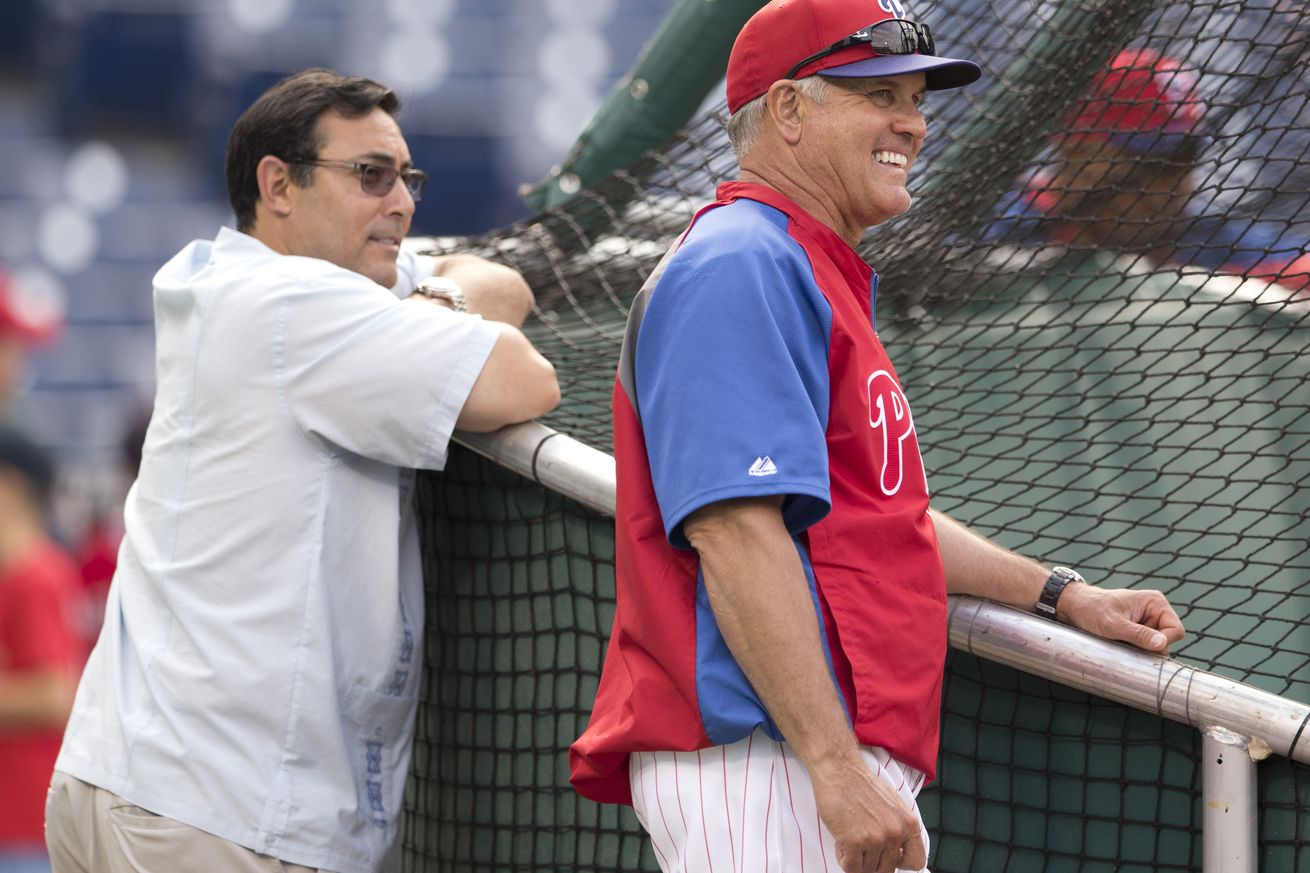
Every disaster has it’s beginning
In the first official piece in our celebration of the 2015 Phillies, we’ll look back on the offseason that began in 2014 where what would become the worst team in baseball began to take shape.
The Phillies entered the 2014-2015 offseason fresh off of a 73-89 season that saw them try desperately to take the nails out of a sealed tight championship window. They signed the likes of Marlon Byrd and A.J. Burnett before 2014 in an attempt to “reload.” After that attempt failed miserably, the Phillies front office led by General Manager Ruben Amaro Jr. finally accepted defeat and started to trade away their aging players, including a franchise icon.
Jimmy Rollins was sent to the Dodgers in a three-team deal on December 19th, 2014, that netted the return of a young right-hander named Zach Eflin and a lefty named Tom Windle. Reliever Antonio Bastardo was shipped to Pittsburgh in return for left-hander Joely Rodriguez. The aforementioned Byrd was traded once again by the team that originally drafted him, moving to Cincinnati in return for right-handed pitcher Ben Lively.
The Phillies were looking to find more starting pitching with these trades, as their rotation following the end of 2014 consisted of Cole Hamels, David Buchanan, and an injured-never-to-play-again Cliff Lee after losing Burnett and Kyle Kendrick to free agency. Prized prospect Aaron Nola was moving through the system quickly and could debut in 2015, but those other acquired arms were a year or so away and Hamels was a top trade chip. So, Amaro looked for some cheap starters to fill out the rotation because, well, somebody has to pitch every five days.
The first step was re-signing Jerome Williams. The 32-year-old pink-gloved righty made nine starts with the Phillies in 2014 with a 2.89 ERA. Next up was signing the sleepless one Aaron Harang to a one year, $5M deal. Harang was coming off a surprising 2014 where he made 33 starts with the Atlanta Braves and had a 3.57 ERA in 204.1 IP as a 36-year-old. Finally, former Dodger Chad Billingsley inked a one-year deal looking to bounce-back from missing essentially two and a half seasons with a partially torn UCL and a torn flexor tendon.
With the rotation addressed, it was time to look towards an offense that ranked 27th in OPS in 2014. With Philadelphia finally in rebuild mode, it was never likely that they would offer big money to free agents the likes of Nelson Cruz or Hanley Ramirez. The Phillies were however considered a frontrunner for Cuban import Yasmany Tomás, one of the hottest names of the offseason, but the 24-year-old agreed on a 6 year, $68.5M deal with the Arizona Diamondbacks.
So instead, the Phillies re-signed Grady Sizemore following a 60-game showing in 2014 that resulted in a .701 OPS and 0.3 WAR. That was the only “outside” bat that was brought in, as Amaro and the Phillies were looking towards their farm to bring improvement and ultimately to replace icons like Rollins, Chase Utley, Ryan Howard, and Carlos Ruiz. The latter three were still on the team, but it was widely expected that Utley and/or Ruiz could be moved at the trade deadline. Howard wasn’t likely to be traded however, as he was in the final guaranteed year of a 5 year, $125M contract and posted the worst OPS (.690) and WAR (-1.3) of his career.
Freddy Galvis, Cesar Hernandez, Darin Ruf, and Cameron Rupp were to be worked into the lineup more, as the trio were the first attempts at heirs apparent to the franchise legends. Top prospect Maikel Franco was about to embark on his first full season in the Majors after a short call-up in September of 2014. Franco’s debut displaced other prospect Cody Asche to the outfield, as the more highly regarded Franco was given control of 3B. Rule 5 pick Odubel Herrera looked to be in the mix for a starting outfield job as Philadelphia looked to fulfill the obligations to keep him in the organization.
There was another addition to the organization, but not to the roster. Jamie Moyer left the broadcast booth after one season and was replaced by Ben Davis. Davis joined a booth that included Tom McCarthy on play-by-play and Matt Stairs as the other color commentator.
With Spring Training on the horizon, the Phillies would soon sort out the logistics of who played where and how often, with hardly any positions fully locked down heading into camp. Manager Ryne Sandberg would have the opportunity to evaluate after some game action.